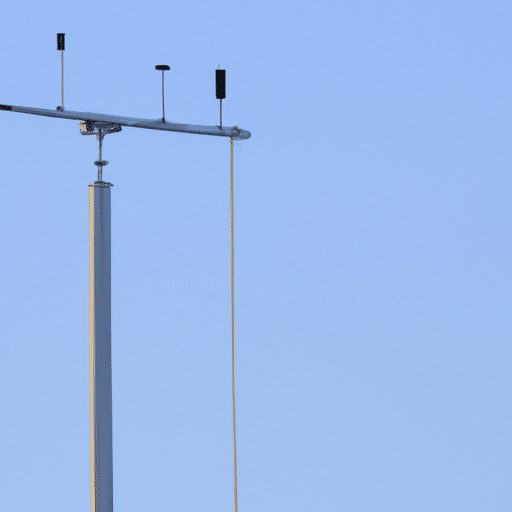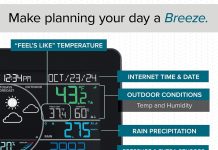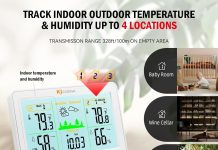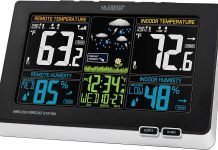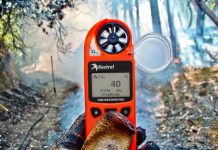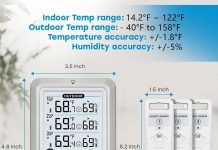Have you ever wondered how tall the weather station mounting pole should be? It’s a question that can often go overlooked when setting up a weather station, but it’s an important consideration. The height of the pole can significantly impact the accuracy and reliability of the weather data collected. In this article, we will explore the factors that should be taken into account when determining the optimal height for a weather station mounting pole. So, let’s dive in and find out how to ensure the best results from your weather station.
Review contents
Factors to Consider
When deciding on the height of a weather station mounting pole, there are several factors that need to be taken into consideration.
Type of Weather Station
The first factor to consider is the type of weather station being installed. There are two main types to choose from – fixed and mobile. Fixed weather stations are designed to stay in one location permanently, while mobile weather stations are designed to be portable and can be moved to different locations as needed. The type of weather station you choose will impact the height of the mounting pole required.
Weather Station Location
The location of the weather station is another important consideration when determining the height of the mounting pole. Different types of weather conditions and obstacles can be found in various locations, such as urban areas, rural areas, coastal areas, mountainous areas, and forest areas. Each location presents unique challenges that need to be taken into account when deciding on the height of the mounting pole.
Surrounding Obstacles
The presence of surrounding obstacles should also be considered when determining the required height of the mounting pole. Buildings, trees, fences, power lines, and other structures can obstruct the flow of air or interfere with the accuracy of the weather sensors. To ensure accurate readings, the mounting pole should be tall enough to clear these obstacles.
Required Sensor Height
Different weather sensors have different height requirements that need to be met for accurate measurements. Wind speed and direction sensors, for example, need to be positioned at a certain height above ground level to measure the true wind conditions. Rainfall sensors, on the other hand, need to be placed at a height where they can collect rain without interference from nearby objects. The height requirements for temperature and humidity sensors, barometric pressure sensors, and solar radiation sensors also need to be considered when determining the height of the mounting pole.
Local Weather Patterns
Local weather patterns play a significant role in determining the required height of the weather station mounting pole. Understanding prevailing wind direction, extreme weather conditions, and climatic variations in the area can help determine the optimal height for the mounting pole. For example, if the area experiences strong winds or frequent thunderstorms, a taller mounting pole may be necessary to minimize any interference or damage caused by these weather conditions.
Industry Standards
It is important to be aware of industry standards when deciding on the height of a weather station mounting pole. National Weather Service guidelines and World Meteorological Organization standards provide valuable recommendations and requirements that should be followed. These standards help ensure accurate and reliable weather data collection and analysis.
Installation Tips
When installing a weather station, there are a few tips to keep in mind to ensure optimal performance.
Pole Material
Choosing the right material for the mounting pole is essential. The pole should be sturdy, durable, and resistant to corrosion, especially in harsh weather conditions. Common materials for weather station mounting poles include stainless steel, aluminum, and treated wood. Consider the climate and environment to determine the best material for your specific needs.
Pole Strength
The strength of the mounting pole is crucial, especially in areas with high winds or extreme weather conditions. Make sure the pole can withstand the forces exerted on it without bending or breaking. Consider the weight of the weather station and any additional accessories that may be installed on the pole when determining its strength requirements.
Secure Mounting
Properly securing the mounting pole is essential to ensure its stability and prevent it from toppling over. Depending on the type of weather station and surrounding terrain, various mounting options may be available, such as ground anchors, concrete bases, or specialized mounting brackets. Consult the manufacturer’s guidelines and follow proper installation techniques to ensure a secure mount.
Weatherproofing
To protect the weather station and its components from the elements, it is important to weatherproof the installation. This includes sealing any connections, using weather-resistant materials for wiring and sensor housing, and applying appropriate coatings or finishes to protect against moisture, UV rays, and other environmental factors.
Weather Station Accessories
In addition to the mounting pole, there are several accessories that can enhance the functionality and protection of a weather station.
Guy Wires
Guy wires provide additional stability and support to the mounting pole, especially in areas prone to strong winds or heavy snowfall. These wires are anchored to the ground and attached to the pole to help prevent it from swaying or toppling over.
Lightning Protection
In areas with frequent lightning activity, it is important to install lightning protection measures to safeguard the weather station and its components. This may include lightning rods, surge protectors, and grounding systems to direct and dissipate electrical charges safely.
Antenna Mounting
If the weather station includes wireless communication capabilities, it may require an antenna for transmitting and receiving data. Properly mounting the antenna is essential to optimize signal strength and data transfer. This may involve attaching the antenna to a specific height on the mounting pole or using a separate antenna mast.
Maintenance Considerations
Regular maintenance is important to ensure the longevity and accuracy of a weather station.
Accessibility
When choosing the height of the mounting pole, consider accessibility for maintenance purposes. The pole should be at a height that allows easy access to the weather station components for inspection, cleaning, and calibration. Avoid installing the station in locations that are difficult to reach or require extensive equipment for maintenance.
Safety Precautions
Safety should always be a priority when conducting maintenance on a weather station. Ensure that any climbing equipment or access points to the weather station are secure and stable. Take necessary precautions, such as wearing appropriate safety gear and following proper procedures, to minimize the risk of accidents or injuries.
Periodic Inspection
Regularly inspecting the weather station for any signs of damage, wear, or malfunction is important. Check the mounting pole, sensors, wiring, and other components for any issues that may affect their performance. Address any problems promptly to maintain the accuracy and reliability of the weather data collected.
Cleaning and Calibration
Cleaning the weather station and sensors is essential to remove any dirt, debris, or contaminants that may affect their accuracy. Follow manufacturer’s guidelines for proper cleaning methods and frequencies. Additionally, periodic calibration of the sensors ensures that they continue to provide precise measurements. Calibration should be carried out according to the manufacturer’s instructions or by certified professionals.
In conclusion, determining the optimal height of a weather station mounting pole requires careful consideration of various factors. The type of weather station, location, surrounding obstacles, required sensor heights, and local weather patterns all play a role in this decision. By following industry standards, implementing proper installation techniques, and conducting regular maintenance, a weather station can provide accurate and reliable data for better understanding and forecasting of weather conditions.

